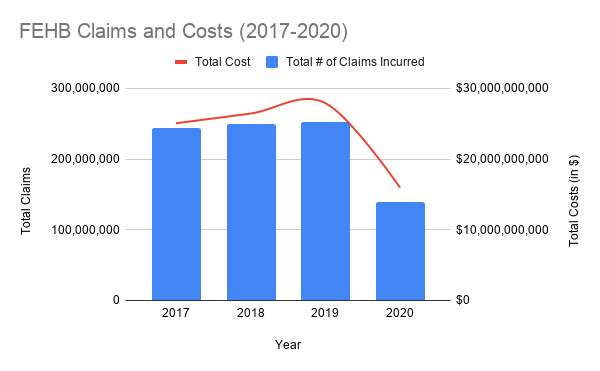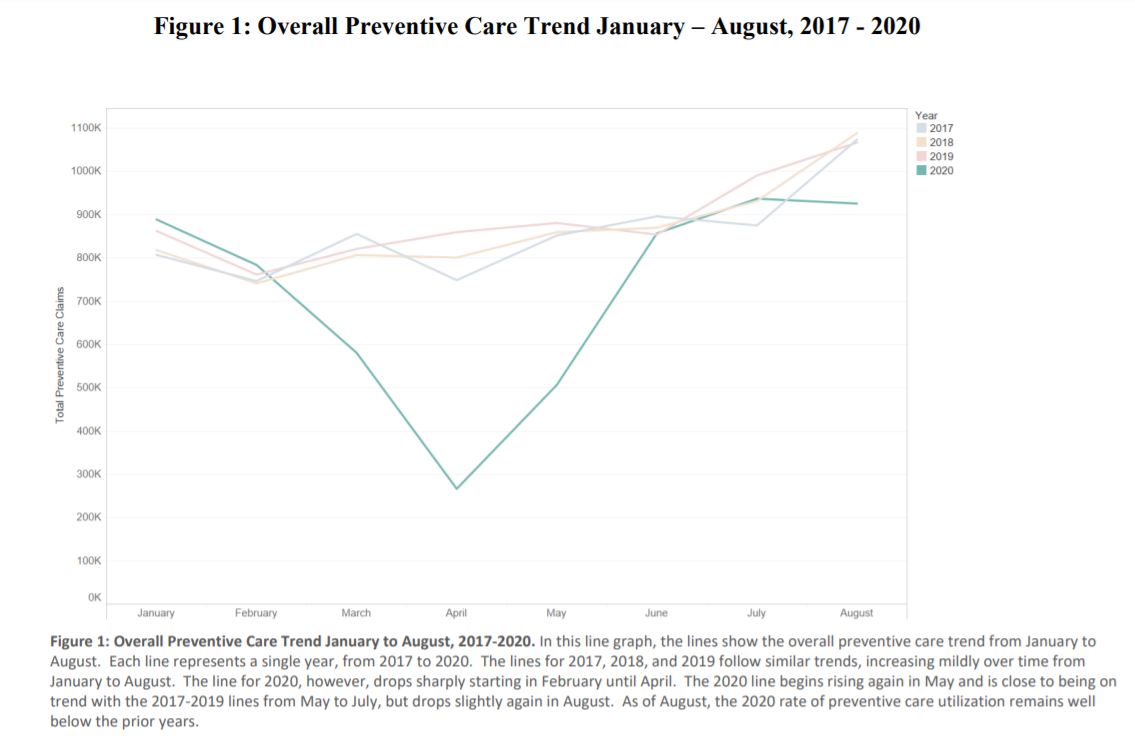

Doctor visits, vaccinations and other preventative screenings were down significantly among participants in the Federal Employees Health Benefits Program during the...
If the pandemic gave you an excuse to skip out on a few doctor’s appointments over the last nine months, know that you’re not alone.
Perhaps it’s no surprise, but many employees and retirees in the Federal Employees Health Benefits Program (FEHBP) delayed or canceled those annual checkups and preventative procedures last year.
The Office of Personnel Management’s inspector general worries those trends will cost FEHB participants physically — and maybe financially — in the long run.
“This significant decrease in preventive care services could have potential cost and participant health ramifications for the program should these trends not recover in the coming months,” the IG said.
Annual wellness exams, adult and pediatric vaccinations, colonoscopies, routine mammograms, you name it, they all fell dramatically in 2020 at the height of the pandemic last spring.
OPM’s inspector general review reviewed health insurance claims from the two largest fee-for-service carriers from 2017 through August 2020. The IG didn’t name the carriers, but alone, they cover 76% of the FEHB population.
More than 6.2 million people were enrolled in FEHB plans from one of these carriers in 2020, slightly more than the number of participants from 2017 through 2019.
But despite higher enrollment, FEHB participants filed far fewer claims during the first eight months of 2020 compared to previous years.

For example, FEHB participants filed 45% fewer claims during the first eight months of 2020 compared to 2019. Costs to the FEHB fell by 43%.

“Preventative care rebounded slightly in the late spring and summer, but it hasn’t returned to normal,” the IG said.

And it’s unclear how recent surges in COVID-19 cases might impact these trends for the last few months of 2020 and early months of 2021.
Instead, the OPM IG offered this cheery assessment: “It is too early to tell how a potential surge in COVID-19 cases heading into autumn and winter may affect future utilization, but the current direction is concerning.”
Annual wellness exams dipped nearly 19% in 2020 during the pandemic, according to the IG. Colonoscopies dropped 32%, while while mammograms fell nearly 24%. Prostate exams dipped nearly 19%, and women’s preventative exams fell by 36%.
Pediatric vaccinations were down 16%, the OPM IG said.
Like the chart above shows, feds and retirees largely skipped the doctor’s office in large numbers in March, April and May.
“Though utilization for some of these services appears to be rebounding since June, utilization rates have not returned to levels seen in previous years for many types of services and are not close to the utilization levels that would be needed to make up for the services missed earlier in the year,” the OPM IG said. “Given the many benefits of regular preventive care, we have concerns about the effect of these trends on the health of the FEHBP population, as well as on the health care system as a whole.”
In response, OPM said FEHB carriers were reminding their participants to schedule regular checkups, treatments and other screenings. Health insurance providers are also doing their own surveys, analysis and planning.
The IG pointed out the obvious health concerns. But there are potential financial concerns too.
Setting those FEHB premiums every year is complicated stuff, and there are plenty of factors that go into setting those premiums. Generally speaking, how participants use the healthcare system during the prior year, in part, has an impact on the next year’s premium rates.
OPM acknowledged this last fall. Elective surgeries and routine checkups dropped in 2020, while prescription drug use stayed flat or rose slightly. Those combination of factors led to the relatively modest premium hikes for 2021. OPM suggested if it wasn’t for the pandemic, premium rates in 2021 would have been higher.
But what about 2022, or future years for that matter, when FEHB enrollees flock back to their doctor’s offices again for those checkups and preventative procedures they’ve been putting off?
That’s when things could get challenging. The OPM IG didn’t get incredibly specific but suggested the significant drops in FEHB usage for certain services could affect future premium rates.
The focus has —rightly so — been on COVID-19, not on those annual checkups and preventative treatments. But the balance will shift eventually, and as FEHB enrollees tap back into an expensive health care system in the coming years and (hopefully) months, someone will have to shoulder the costs.
By Alazar Moges
On the top floor of the Supreme Court, there is a gym that also features a basketball court dubbed ““The Highest Court in the Land.”
Source: Atlas Obscura
Copyright © 2025 Federal News Network. All rights reserved. This website is not intended for users located within the European Economic Area.
Nicole Ogrysko is a reporter for Federal News Network focusing on the federal workforce and federal pay and benefits.
Follow @nogryskoWFED


